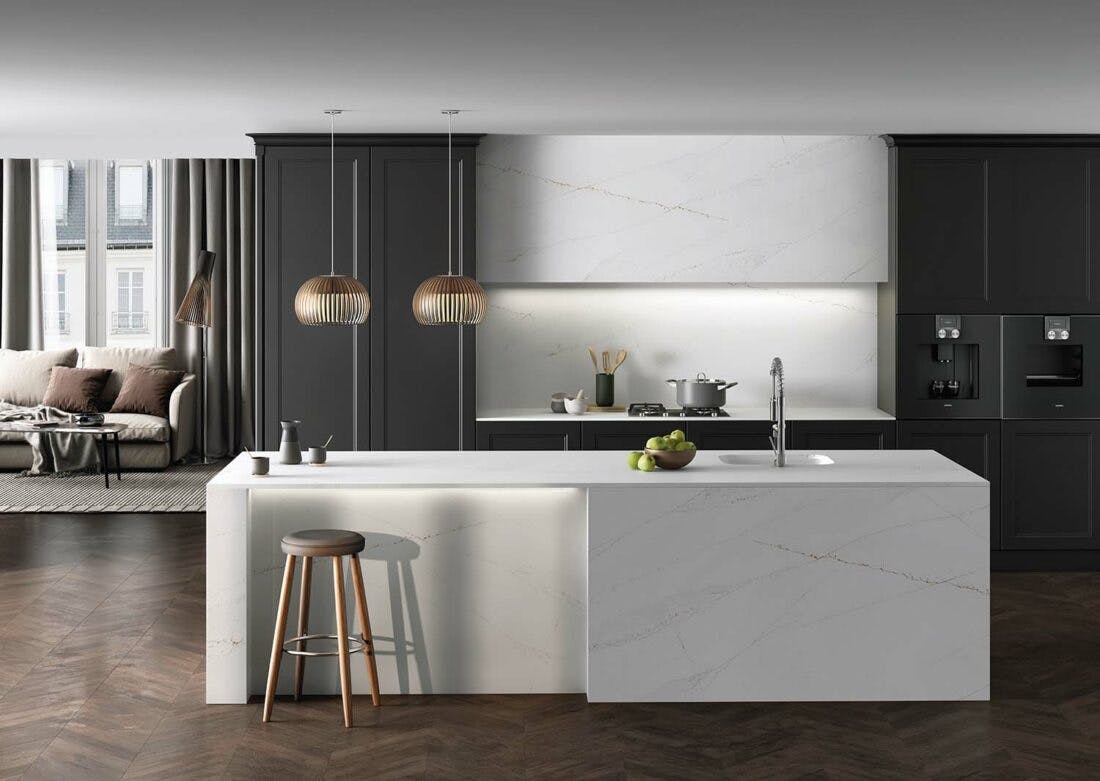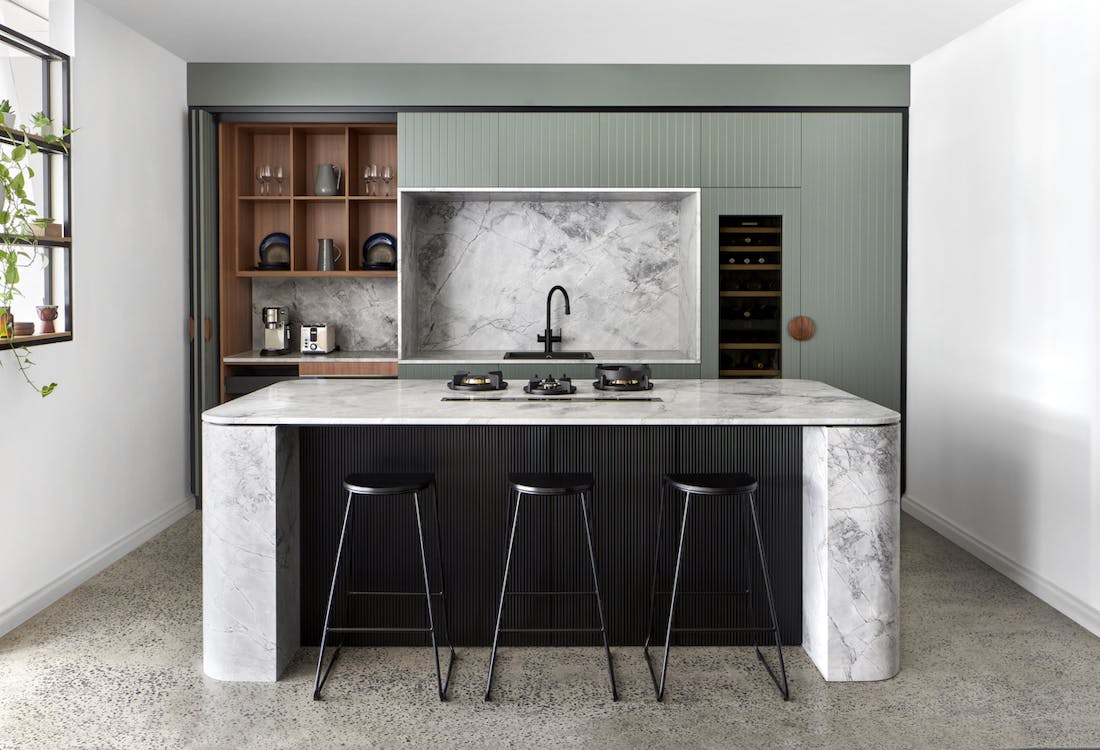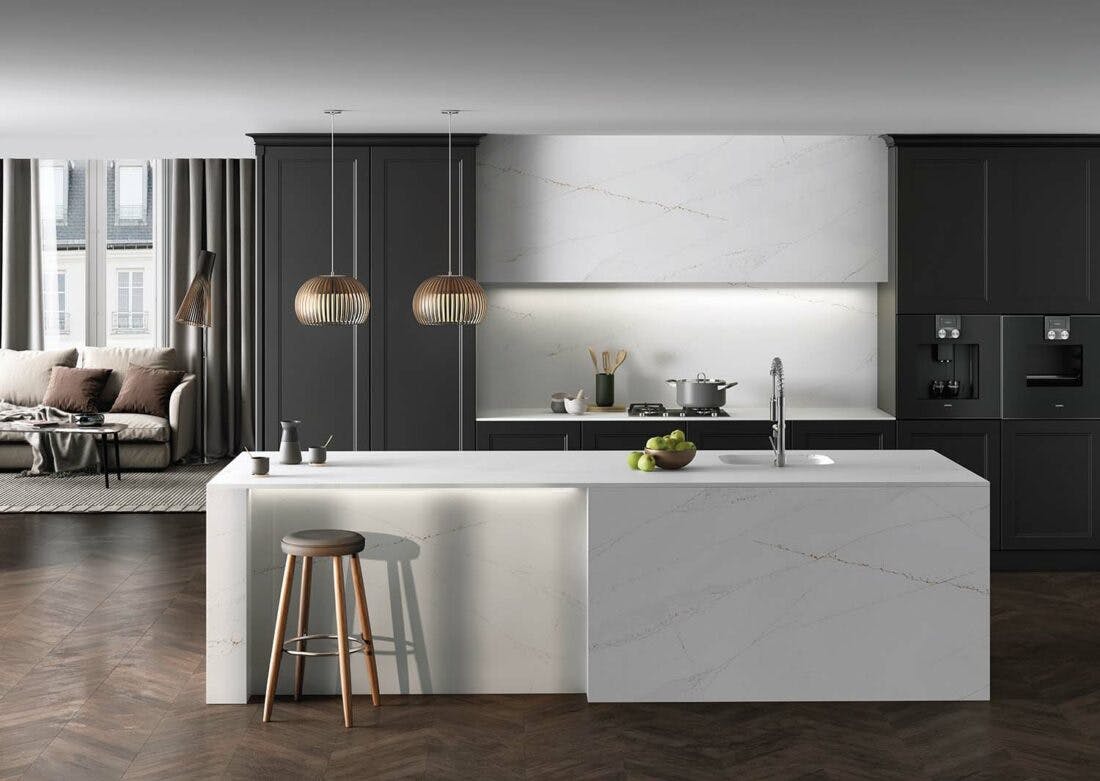
Move Your Kitchen to Another Room
Home » Blog & Events » Move Your Kitchen to Another Room
We often think that changing our kitchen to another room is a good option to add some more style, design, comfort and space into our homes. Whether your idea is to create a space that is larger, more multipurpose, or you just want to change things up a little, moving your kitchen to another room is a decision that is becoming increasingly popular in partial or full renovations.
The urge for change, the importance of cooking, or the search for more versatile spaces are just some of the main reasons as to why more people are deciding to move their kitchens to another room or incorporate it with their dining rooms to be an open plan space perfect for multi-generational living.
Here at Cosentino we are going to explain how to move your kitchen to another room and achieve the perfect solution for your home.
Can you move your kitchen to another room in a flat?
Moving your kitchen to another room is possible, however, several factors need to be considered in order to achieve the features and characteristics required for a new professional kitchen.
Firstly, the local regulations need to be reviewed for technical projects, to see if a building licence is required. You also need to consider where your basic kitchen components are going to go, such as:
- Extractor Fan
- Water Pipes
- Power Sockets
- Drains
- Gas Outlets
- Boiler Pipes
How to move your kitchen to another room
When moving your kitchen to another room, you need to consider the layout of your pipes. If you intend to move your kitchen without doing any renovation work, you need to remember that the floor, walls, and ceiling may all be affected based on where the new drains and extractor fans are located.
That is why one of the first steps to consider when moving a kitchen is to decide where the drains are and where the wastewater from your kitchen appliances will run to. Extraction and ventilation must also be taken into consideration if you want to move your kitchen to another room. There must be a secured route that leads to an external façade, with the aim that the distance always be as short as possible. Your electricity supply must also be carefully thought out before moving your kitchen to another room.
Finally, if your boiler is in your kitchen, you also need to think about your outdoor boiler flue, your gas outlet and your central heating or underfloor heating connections.
Building licences required to move your kitchen to another room
Before starting any work, you first need to obtain a series of permits and building licences. With this in mind, before moving your kitchen to another room, you must first check all the necessary requirements for building licences and permits. Depending on the work to be done, the location, or if the home is grade-listed or not, the licences required could range from just a few to several.
Broadly speaking, we can categorise the following types of licences:
- Minor works: these are works which will not affect the structure or communal space shared with other homeowners. These types of licences are for simple changes such as new flooring, tiling, painting walls, or installing any mounted furniture.
- Major works: these licences are for comprehensive renovation work such as extensions or reductions, the removal of walls or pillars, changes of layout, or the addition of new building features. In general, structural reforms require a series of prior authorisations as they can involve a risk for people.
- Changes of household installations: if the renovation work includes changes to pipes, power sockets, drains, or extractor fans, another set of licences will be required, and the modifications must be made known to the corresponding local council authority.
In the case of any communal property being affected, such as flues being installed on an external façade of a communal building, the approval of the other homeowners must also be obtained.

 Back
Back





